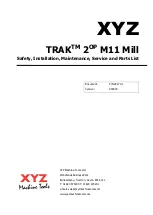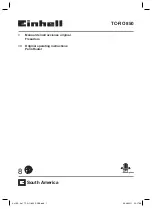
Preparing for Installation
Tropos 5210 MetroMesh Router Installation Guide
5
device at the building entrance. Tropos Data Protection Device and Network Protection Units
are UL497A secondary protection devices.
Location Guidelines
The Tropos 5210 MetroMesh router is a radio device and therefore susceptible to interference
that can reduce throughput and range. Follow these guidelines to ensure the best performance:
Install the unit in an area where trees, buildings, and large steel structures do not obstruct
radio signals to and from the antenna. Direct line-of-sight operation is best.
Install the unit away from microwave ovens or other devices operating in the 2.4 GHz
frequency range.
Install the unit away from other possible sources of 2.4 GHz WLAN interference, such as
cordless phones, home spy cameras, frequency hopping (FHSS) and DSSS LAN
transceivers (non-802.11b), electronic news gathering video links, radars, amateur radios,
land mobile radio services, local government sites (such as law enforcement), fixed
microwave services, local TV transmission and private fixed point transmitters.
Antenna Options
You can purchase the Tropos 5210 MetroMesh router with an integrated omni-directional
antenna, or use an approved external antenna. Omni-directional antennas are best for systems
requiring a signal distribution in more than one direction. To comply with regulatory RF
exposure limits, locate antennas a minimum distance of 7.9 inches (20cm) from people. For
antenna model numbers, refer to
“Approved Antenna Configurations and Attenuation Settings”
on page 57.
Note
Antenna(s) must be installed by a trained professional. Operating the unit with non-qualified
antennas is a violation of U.S. FCC Rules Part 15.203(c), Code of Federal Regulations, Title
47. See
“Approved Antenna Configurations and Attenuation Settings”
on page 57 for a listing
of antenna options.
















































